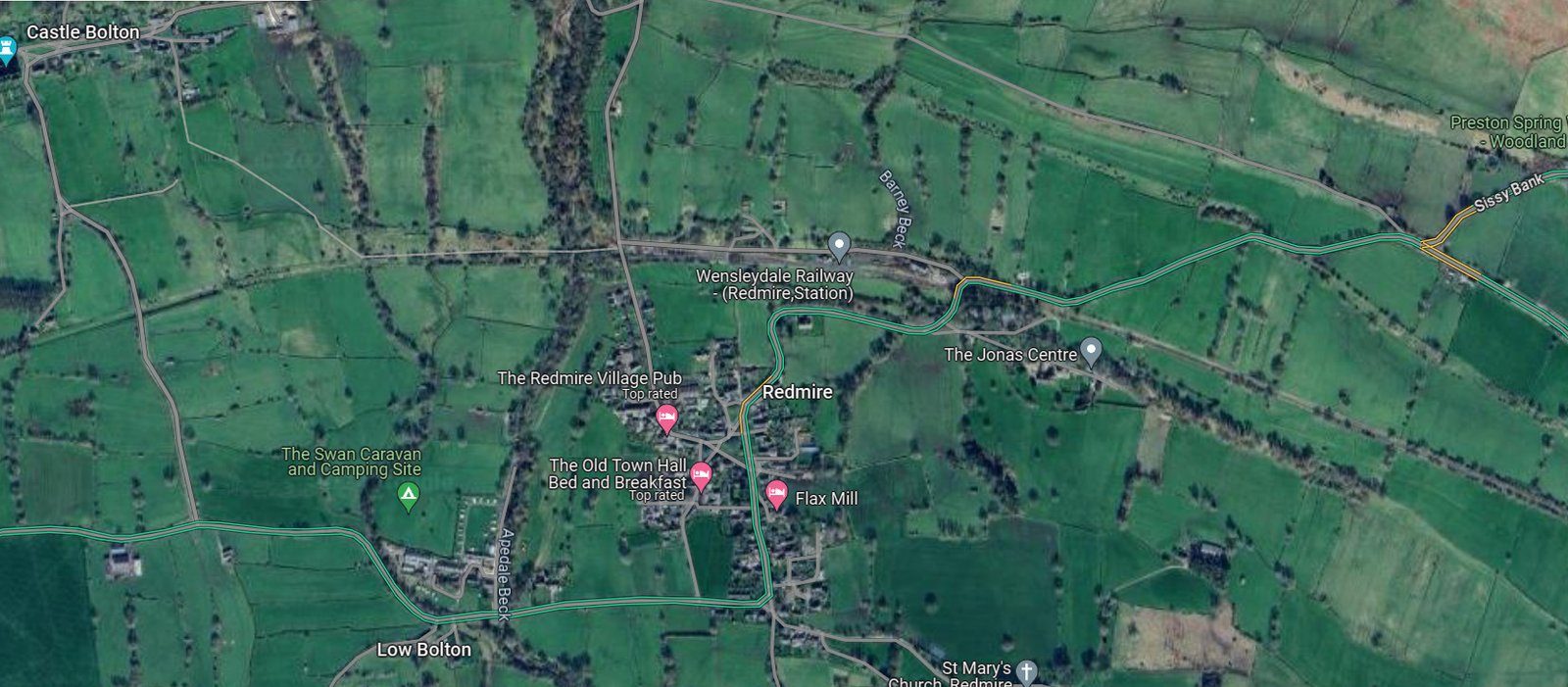Site Details:

Redmire, a charming village nestled in the heart of North Yorkshire, England, boasts a rich tapestry of history that is as picturesque as its serene landscapes. The village's origins can be traced back over a thousand years, with its name deriving from the Old English words 'hreod' and 'mere', meaning 'reed' and 'lake', respectively. This historical gem is situated approximately 4 miles west of Leyburn in Wensleydale, a location renowned for its breathtaking beauty within the Yorkshire Dales.
 The village has been a silent witness to various historical epochs, including evidence of an Iron Age settlement, indicating a long-standing human presence in the area. Throughout the centuries, Redmire has evolved, yet it has maintained its quintessential English village charm. The local architecture provides a window into its past, with St. Mary's Church standing as a testament to the village's enduring faith and community spirit. The church, with its Norman doorway, is not only a place of worship but also a historical monument, encapsulating the architectural styles and cultural influences that have touched Redmire over the centuries.
The village has been a silent witness to various historical epochs, including evidence of an Iron Age settlement, indicating a long-standing human presence in the area. Throughout the centuries, Redmire has evolved, yet it has maintained its quintessential English village charm. The local architecture provides a window into its past, with St. Mary's Church standing as a testament to the village's enduring faith and community spirit. The church, with its Norman doorway, is not only a place of worship but also a historical monument, encapsulating the architectural styles and cultural influences that have touched Redmire over the centuries.
Redmire's historical significance is further accentuated by its connection to the Wensleydale Railway, which terminates in the village. This railway has played a pivotal role in the village's connectivity and development, even serving the Ministry of Defence for the transportation of armoured vehicles to the nearby Catterick military area.
 Today, Redmire continues to thrive while preserving its historical essence. The village pub, the Bolton Arms, remains a focal point for both locals and visitors, offering a warm welcome and a taste of traditional Yorkshire hospitality. The surrounding landscapes, rich in natural beauty and wildlife, provide endless opportunities for exploration and reflection, allowing one to step back in time and experience the tranquil pace of village life that has endured for centuries.
Today, Redmire continues to thrive while preserving its historical essence. The village pub, the Bolton Arms, remains a focal point for both locals and visitors, offering a warm welcome and a taste of traditional Yorkshire hospitality. The surrounding landscapes, rich in natural beauty and wildlife, provide endless opportunities for exploration and reflection, allowing one to step back in time and experience the tranquil pace of village life that has endured for centuries.

The Iron Age settlement in Redmire is a fascinating subject, offering a glimpse into the distant past of this Yorkshire village. While details about the settlement are scarce, it is known that during the Iron Age, Britain was inhabited by various tribes who lived in hill forts and farmed the land. This is located adjacent to the village of Castle Bolton.
The evidence of an Iron Age presence in Redmire suggests that it was likely a part of this broader cultural tapestry. These settlements were typically characterized by roundhouses with thatched roofs, surrounded by defensive structures such as ditches and ramparts. The people who lived in these communities were skilled farmers, warriors, and craftspeople, known for their work with iron, which gave the era its name. They would have engaged in daily activities such as tending to crops and livestock, crafting tools and weapons, and trading with neighbouring settlements.
The strategic location of Redmire, with its proximity to natural resources and trade routes, would have made it an ideal place for such a settlement. Although the Iron Age is often seen as a prelude to Roman Britain, the legacy of these early inhabitants can still be felt in the layout of the land and the enduring spirit of the village. The discovery of such a settlement adds a rich layer to Redmire's history, connecting the present-day village to a time when life was governed by the rhythms of nature and the skills of hand and tool.
The archaeological findings at Redmire have unveiled a fascinating glimpse into the Iron Age period, revealing a settlement that was both complex and sophisticated. Excavations have uncovered the remains of at least 15 roundhouses, which were common residences during the Iron Age in Britain. These structures, typically constructed from wooden stakes woven together and held in place with mud or clay, have been found to range in size, indicating a community with various dwellings. The largest of these roundhouses measured an impressive 49 feet in diameter, providing a substantial living space for its inhabitants.
Among the discoveries, a painted fragment of dried daub was found, suggesting that these structures were not just functional but also possibly adorned with decorations. This find adds a new dimension to our understanding of the aesthetic sensibilities of the Iron Age people. The settlement's residents were likely subsistence farmers, relying on crops for survival, and evidence suggests they built a nearby hillfort for protection against potential attacks.
The archaeological team, surprised by the sheer number of houses within such a small area, noted that the initial geophysical survey did not reveal the full extent of the settlement due to local geological conditions. It was only through the process of excavation that the true scale of the settlement came to light.
In addition to the roundhouses, the site also yielded a Roman villa, dating to several hundred years later, which indicates a period of occupation and use that spanned beyond the Iron Age. The juxtaposition of these two distinct architectural styles speaks to the transitions and continuities in the area's history.
The findings at Redmire not only provide insights into the architectural practices of the time but also offer a window into the daily lives of the Iron Age people. Personal artifacts and the layout of the settlement give us clues about how they lived, worked, and interacted with their environment. The discovery of a painted fragment of daub, in particular, suggests that there was a sense of community and identity expressed through the decoration of their living spaces.
Site Gallery
Gallery Empty












